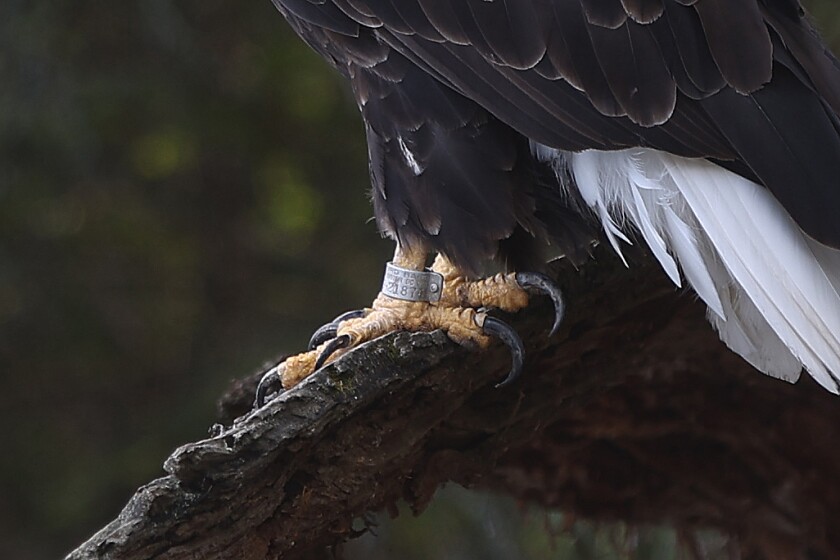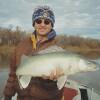Earlier this month, I wrote about two orphaned by Minnesota Department of Natural Resources conservation officer Bobby Stringer, Thief River Falls, and Kittson County sheriffŌĆÖs deputies.
The cubsŌĆÖ mother had been shot and left in a ditch between Lake Bronson and Lancaster, Minnesota.
ADVERTISEMENT

As often happens with rescued animals, the bears were taken to Wild and Free, a wildlife rehabilitation center in Garrison, Minnesota, which specializes in rehabilitating animals for eventual return to the wild.
I reached out to Wild and Free staff for an update at the time I wrote my column about the rescue, but didnŌĆÖt hear back before my deadline and a weekŌĆÖs vacation.
Grace Frickenstein, Wild and FreeŌĆÖs Wildlife Program coordinator, got back to me with an update while I was gone.
In a nutshell, the cubs are doing well, she said, and are now in a 1.3-acre pen with nine other bears.
Wild and Free also has a second pen, which it is preparing for use, she says.
ŌĆ£There is some clean-up and fence patching required every year,ŌĆØ Frickenstein said. ŌĆ£They are messy and like to dig.ŌĆØ
The cubs, which weigh about 25 pounds each, are being fed a mixture of goatŌĆÖs milk and other milk replacers, as well as dry dog food and lots of fresh produce.
ADVERTISEMENT
They get upwards of 8 gallons of goatŌĆÖs milk every day ŌĆ£and are just living their bear lives,ŌĆØ Frickenstein said Thursday, June 26 in a follow-up phone interview. TheyŌĆÖre also eating a ŌĆ£ridiculousŌĆØ amount of produce every day, she said ŌĆō two to three 5-gallon buckets worth.
ŌĆ£They love watermelons, strawberries and corn on the cob,ŌĆØ Frickenstein said. ŌĆ£We continue feeding them through the summer, and by late August, we begin feeding them exclusively apples and acorns. We have individuals from across the state who pick up acorns from their properties and bring them to us for the bears, and it is much appreciated.ŌĆØ
Staff are ŌĆ£very happyŌĆØ with how the cubs are doing, Frickenstein said.
ŌĆ£We see them up in the trees pretty consistently and they scare (the daylights) out of everyone because theyŌĆÖll climb all the way up to the tippy-top of the branches and be swaying in the wind, and weŌĆÖre like, ŌĆśWhat are you doing?ŌĆÖ ŌĆØ she said. ŌĆ£They are definitely growing into their feet ŌĆō theyŌĆÖre getting a lot bigger.ŌĆØ
By Halloween, they stop feeding the bears, Frickenstein said, and the combination of colder temperatures, less daylight and less available food lets them know it is time to hibernate. Wild and Free provides den boxes, which the bears fill with dirt and tree leaves and spend the winter.
Each pen has two boxes, but they all tend to squeeze into one box, she says.
ŌĆ£We'll see if having 11 of them out there changes things,ŌĆØ Frickenstein said. ŌĆ£The boxes comfortably house about four or five bears, but weŌĆÖve had upwards of seven in the same box at one time.ŌĆØ
ADVERTISEMENT
In late March or early April, the DNR comes and, with assistance from Wild and Free staff, tranquilizes the bears, takes measurements and hauls them in culvert traps ŌĆ£to undisclosed locations in areas where the black bear population is lower and their chances of interacting with humans are minimal,ŌĆØ Frickenstein said.
All of the bears are fitted with DNR ear tags so they can be identified if harvested during hunting season or hit by a vehicle.
ŌĆ£We typically do not hear about them once they are gone, which is good news in our book,ŌĆØ Frickenstein said.
34-year-old eagle
In keeping with the wildlife theme, I recently received a text message from Northwest Angle fishing guide Lisa Marvin about a banded bald eagle that has become a fixture on the Ontario side of Lake of the Woods.

Herald photographer Eric Hylden photographed the eagle in August 2023 at a secluded island shore lunch spot while the two of us were I didnŌĆÖt notice the leg band until I saw HyldenŌĆÖs photo, but I was able to read the band number and reported it to the federal bird banding lab at bandreports@usgs.gov .
In October 2023, I received a reply from the banding lab that as a nestling on the Ontario side of Lake of the Woods by Jim Grier, a professor emeritus of biological sciences at North Dakota State University. Grier, who retired in 2006, banded some 1,400 eagles over 40 years in northwestern Ontario, including Lake of the Woods.
Based on info from the band report, the eagle was 32 years old when we saw it at the shore lunch spot.
ADVERTISEMENT
Marvin saw the eagle several times last summer, too. And in early June, she saw it again.
ŌĆ£Had the first spotting of the eagle this summer ŌĆō made it through the winter,ŌĆØ she said in a text message.
Grier, of course, was thrilled with the news; the eagle now is 34 years old.
ŌĆ£It might be the oldest known living bald eagle in the wild,ŌĆØ Grier said in an email. ŌĆ£It will be good to keep following it. I hope to, sooner or later, get up there to check it out.ŌĆØ










